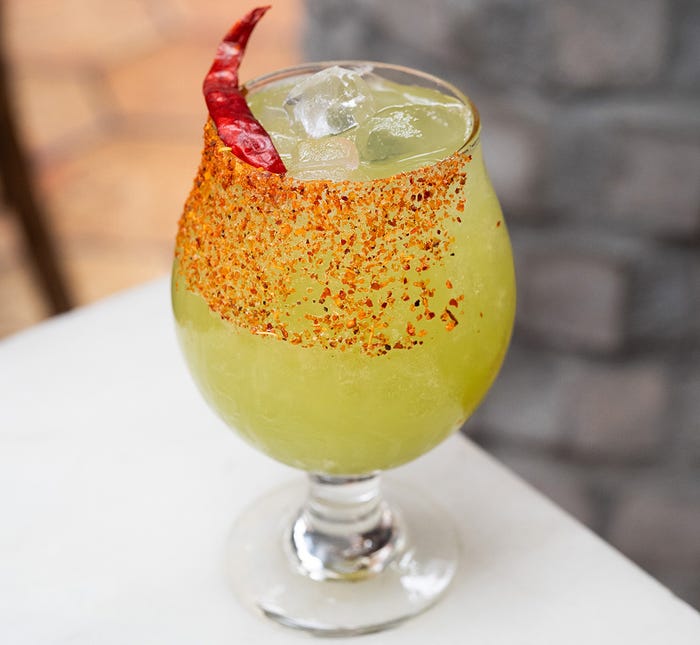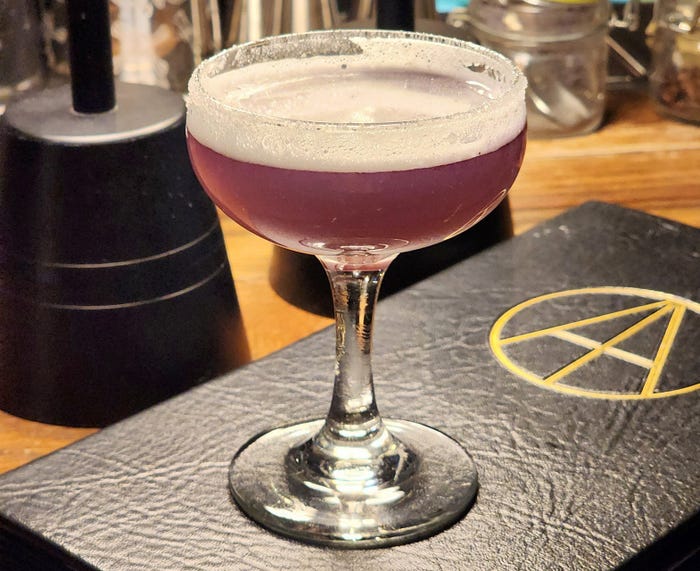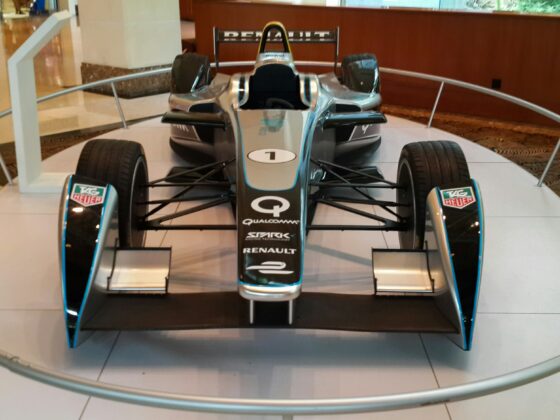In many ways, the United States is recovering from a long and painful hangover. There’s no need to rehash the 2020s up to this point and risk retraumatizing people. Suffice it to say that it’s been rough, and many Americans are taking stock, changing their priorities, and, among other things, drinking less alcohol.
“People, especially as part of the younger generation, are drinking a lot less,” said Caleb Burbey, director of bar and beverage at Bacari, a small-plates concept with seven locations in Los Angeles.
But that doesn’t mean they don’t want to have fun, or that they want to feel left out, and it certainly doesn’t mean that restaurants can’t develop delicious, premium, alcohol-free beverages that their customers are willing to pay for, such as the mocktails that are sweeping the nation.
It’s the start of 2025, and that means many people are participating in Dry January. In 2022, 35% of legal-aged Americans skipped alcohol during the month, according to research firm CGA. But alcohol abstinence, or simply drinking less, isn’t a temporary adjustment for many consumers. Most data sources haven’t caught up with the changes in consumer attitudes over the past couple of years, but operators have seen a pretty dramatic decrease in how many of their guests drink and how much their drinking customers consume.
“Mocktails have had a dramatic increase in popularity over the last year, and it’s a trend we continue to see grow,” said Steven Marshall, lead bartender of Dirty Habit at Hotel Zelos in San Francisco. “So many people have decided to forego alcohol for various different reasons, but still want to partake in the various celebrations, festivities, and experiences that bring people to the bar.”
And it’s not just in San Francisco. Another Broken Egg Cafe, a breakfast, brunch, and lunch chain based in Orlando, Fla., with 102 locations nationwide, has also seen alcohol sales drift downward.
“We’d been seeing a trend of our alcohol sales declining in 2023,” president and CEO Paul Macaluso said.
While some of that decline was simply coming down from the weekday binge drinking that the chain saw as people came out of lockdown in 2021 and 2022, “it was definitely tailing down to pre-COVID levels,” he said.

The SoCal Staple available at seven-unit Bacari in Los Angeles is made with watermelon juice, mint, and lemon-lime soda and is served in a Tajín limed rim. Photo credit: Bacari
He and his team responded quickly. In January of 2023, they introduced new coffee drinks as well as cocktails that don’t contain alcohol.
Call them mocktails, spirit-free, or zero-proof cocktails — whatever the name, operators are offering more of them. Mentions of mocktails on menus are up 37.4% since 2019, including a 9.6% jump last year alone, according to Technomic’s Ignite Menu data.
Another Broken Egg originated in New Orleans and that’s reflected in its culture. Each restaurant has bartenders, and its mocktail program reflects that, with muddled strawberries and purée in its Strawberry Lemonade Spritzer, for example. Its Cucumber Mint Nojito is made with cucumber, lime, fresh sour mix, agave syrup, and sparkling water and is garnished similarly to a Mojito with lime and mint, as well as cucumber.
A current seasonal offering is the Blackberry Smash with muddled blackberries and mint, blackberry purée, lemon, and ginger ale.
“It’s not just some batched thing we do in the morning. These are made at our bar by our bartenders,” Macaluso said.
“We’ve had great response from consumers,” he added. “People want to feel like they’re celebrating. … They want to connect, but maybe they’re going back to the office or whatever. I think it fits that need.”
Mocktails now make up 3-5% of Another Broken Egg’s totals sales, all incremental. Together with the coffee program, they’ve been enough to reverse a negative trend.
“Alcohol sales were declining, but this has more than made up for it,” Macaluso said.
They’re priced differently — around $6 compared to $10-$11 for a cocktail — but the profit margin is about the same thanks to the absence of alcohol, Macaluso said.
The spirit-free cocktails, as Burbey calls them, are less profitable than the high-octane ones at Bacari, but they still have a nice return and remove the risk of over-serving customers.
“When it comes to bartending, we’re basically, in a way, drug dealers. … We’re altering people’s state of mind,” he said. “We’ve got to make sure that we’re being extremely careful about all that stuff … that we’re keeping people safe and comfortable.”
That doesn’t need to be factored in when serving booze-free drinks, but other aspects do: A drink with a base spirit such as whiskey, a couple of liqueurs, sugar, and bitters, is essentially shelf stable (obviously less so if fruit juices are added). But the watermelon juice in the SoCal Staple available at all seven Bacari locations will only last for a day or so.
Still, “we like to make sure that when people are opting not to drink for whatever reasons that they still feel like part of the group and that no one is feeling ostracized in any way,” he said.
The SoCal Staple is made with watermelon juice, mint, and lemon-lime soda and is served with a Tajín limed rim.
“It’s supposed to be reminiscent of when you’re walking down the beach and the guys are walking by with their fruit carts and you decide to get some watermelon and Tajín for the walk and it’s delicious and crisp and fresh,” Burbey said.
That’s Bacari’s simplest zero-alcohol drink; the most complex is the Waste Not Want Not. It starts with pineapple skins that are leftover from the fruit they use to infuse rum for a cocktail. Those are made into a fermented but nonalcoholic drink called tepache, which is mixed with juiced ginger, raw honey, lime juice, cayenne powder, and a little soda water.
“It’s kind of like if you were going to take a health shot, but it in a long-drink format, and definitely not as abrasive,” he said, adding that alcohol drinkers like it too, often adding a shot of mezcal to it.
Bacari’s alcohol-free drinks are $10.50, compared to cocktails, which start at $17.
They’re still quite profitable, with pour costs of 18-22%, but considerably less so than cocktails, for which the target pour cost is 11%.
Burbey said he’ll likely increase the price of his zero-proof drinks once he starts using the non-alcoholic spirit substitutes that are proliferating in the marketplace and tend to cost as much as, if not more than, actual spirits.

The Lavender Lie at Dirty Habit in San Francisco is made with Ritual alcohol-free tequila, lavender syrup, lemon, grapefruit juice, and butterfly pea flower. Photo credit: Dirty Habit
Marshall uses them at Dirty Habit with drinks like the Lavender Lie, made with Ritual alcohol-free tequila, lavender syrup, lemon, grapefruit juice and butterfly pea flower, which he sells for $14. That’s the same price as The Mock Toddy, made with Ritual whiskey, lemon, ginger honey syrup, and spiced syrup.
Owen Bale, co-owner of R House in Miami’s Wynwood neighborhood, which debuted a zero-proof cocktail program in September, said the drinks were introduced in the name of inclusivity.
“At R House, inclusivity is a priority, and we realized there was an audience we were not catering to,” he said.
Hence the $15 No-Groni, made with zero-proof ingredients Bare Vodka, Martini & Rossi Vibrante, and Martini & Rossi Floreale.
The $14 Smoky Mango Margarita is made with St. Ember, a no-alcohol blend of ginger, peppers, and the herb palo santo, along with ginger, cardamom, lion’s mane mushroom, lime, mango, and bee pollen.
R House’s full-proof cocktails are $17.
Alex Valencia, head bartender and co-owner of Vallarta Tropical in New York City, which seeks to evoke the laid-back spirit of Puerto Vallarta, Mexico, and its tiki bar scene of the 1950s, said he charges around the same for cocktails whether they contain alcohol or not — currently low- and no-ABV drinks, including a Margarita and a Poloma made with tequila alternative, are $18 and full-proof cocktails are $20.
“With the emergence of zero-proof spirits, mocktails have taken a step up than just a simple lemonade. [But] these zero-proof spirits such as Seedlip cost similarly in price to normal spirits, therefore we charge around the same,” he said, adding that his customers are fine with that.
“They want to feel a part of their group and they want to hold something that resembles a cocktail.”
Contact Bret Thorn at [email protected]




